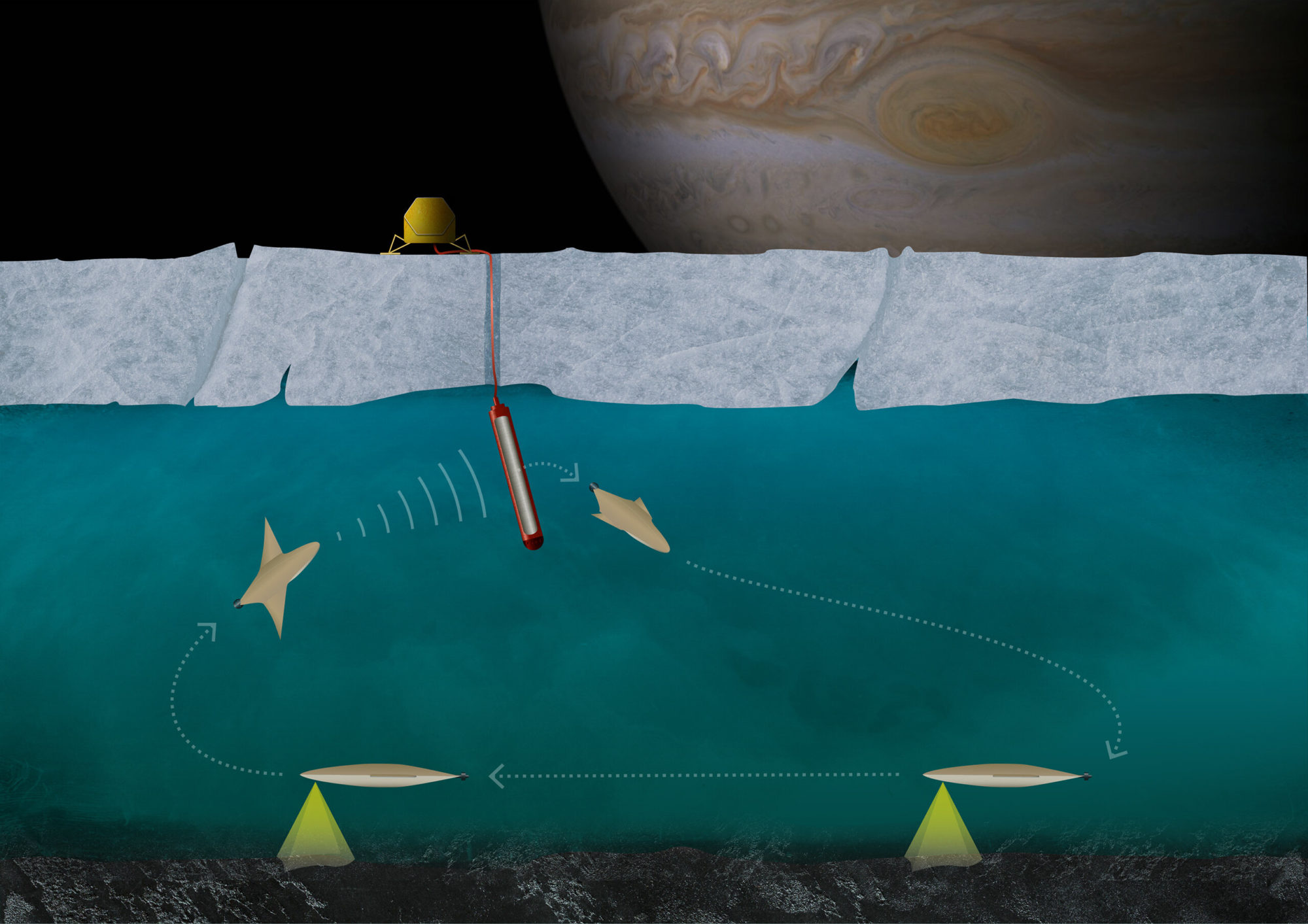
Prompted by the success of the NASA/ESA CASSINI/Huygens mission that delivered stunning new knowledge on the Saturn moon Enceladus the interest in targeted research of icy moons and their presumably existing liquid phases of water below the ice cover has grown significantly. Similar evidence for the existence of an icy lake on Mars had been published recently [1]. All results suggest that traces of either extant or indications of extinct life forms may be found. There is still the lack of a scientific exploration concept, however that will ensure a high probability of finding solid evidence.
To fill this gap a new project, TRIPLE-nanoAUV, had been started where the acronym TRIPLE stands for – Technologies for Rapid Ice Penetration and subglacial Lake Exploration. It takes into account the three different development strands 1) shuttle melting probe, 2) nanoAUV as payload and 3) AstroBioLab that together form the complete TRIPLE system. From its basic conception TRIPLE is open for international cooperation and collaboration with respect to the AstroBioLab, the general instrumentation as well as the data analysis following the two planned field test campaigns in Antarctica, one on the Ekstroem Ice Shelf and the other in a subglacial lake in Antarctica, e.g. in the Dome C region.
[1]: A. Diez, Liquid Water on Mars, Science 25,10.1126/science.aau1829, (2018)



